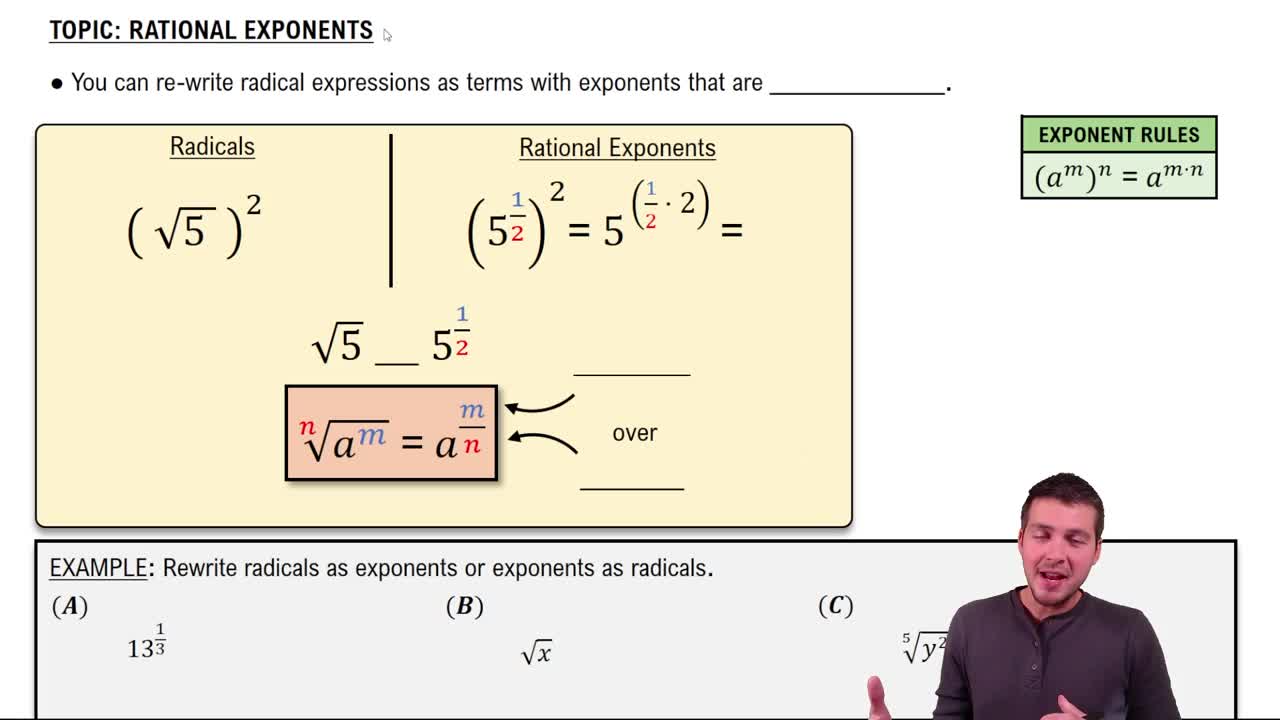Table of contents
- 0. Review of Algebra4h 16m
- 1. Equations & Inequalities3h 18m
- 2. Graphs of Equations43m
- 3. Functions2h 17m
- 4. Polynomial Functions1h 44m
- 5. Rational Functions1h 23m
- 6. Exponential & Logarithmic Functions2h 28m
- 7. Systems of Equations & Matrices4h 6m
- 8. Conic Sections2h 23m
- 9. Sequences, Series, & Induction1h 19m
- 10. Combinatorics & Probability1h 45m
4. Polynomial Functions
Zeros of Polynomial Functions
Problem 30
Textbook Question
Find all rational zeros of each function. ƒ(x)=8x^4-14x^3-29x^2-4x+3
 Verified step by step guidance
Verified step by step guidance1
Identify the possible rational zeros using the Rational Root Theorem, which states that any rational zero, \( \frac{p}{q} \), is such that \( p \) is a factor of the constant term (3) and \( q \) is a factor of the leading coefficient (8).
List the factors of the constant term (3): \( \pm 1, \pm 3 \).
List the factors of the leading coefficient (8): \( \pm 1, \pm 2, \pm 4, \pm 8 \).
Form all possible rational zeros by taking each factor of the constant term and dividing it by each factor of the leading coefficient: \( \pm 1, \pm \frac{1}{2}, \pm \frac{1}{4}, \pm \frac{1}{8}, \pm 3, \pm \frac{3}{2}, \pm \frac{3}{4}, \pm \frac{3}{8} \).
Test each possible rational zero by substituting it into the function \( f(x) = 8x^4 - 14x^3 - 29x^2 - 4x + 3 \) to see if it results in zero, indicating that it is indeed a rational zero.
Recommended similar problem, with video answer:
 Verified Solution
Verified SolutionThis video solution was recommended by our tutors as helpful for the problem above
Video duration:
3mPlay a video:
Was this helpful?
Key Concepts
Here are the essential concepts you must grasp in order to answer the question correctly.
Rational Root Theorem
The Rational Root Theorem provides a method for identifying possible rational roots of a polynomial equation. It states that any rational solution, expressed as a fraction p/q, must have p as a factor of the constant term and q as a factor of the leading coefficient. This theorem helps narrow down the candidates for testing potential rational zeros.
Recommended video:
Guided course

Rational Exponents
Synthetic Division
Synthetic division is a simplified form of polynomial long division that is used to divide a polynomial by a linear factor. It allows for quick evaluation of potential roots by determining if a given value is a zero of the polynomial. If the remainder is zero, the value is a root, and the polynomial can be factored further.
Recommended video:

Higher Powers of i
Polynomial Functions
Polynomial functions are mathematical expressions involving variables raised to whole number exponents, combined using addition, subtraction, and multiplication. The degree of the polynomial indicates the highest exponent, which influences the function's behavior and the number of possible roots. Understanding the structure of polynomial functions is essential for analyzing their zeros.
Recommended video:

Introduction to Polynomial Functions
Related Videos
Related Practice



